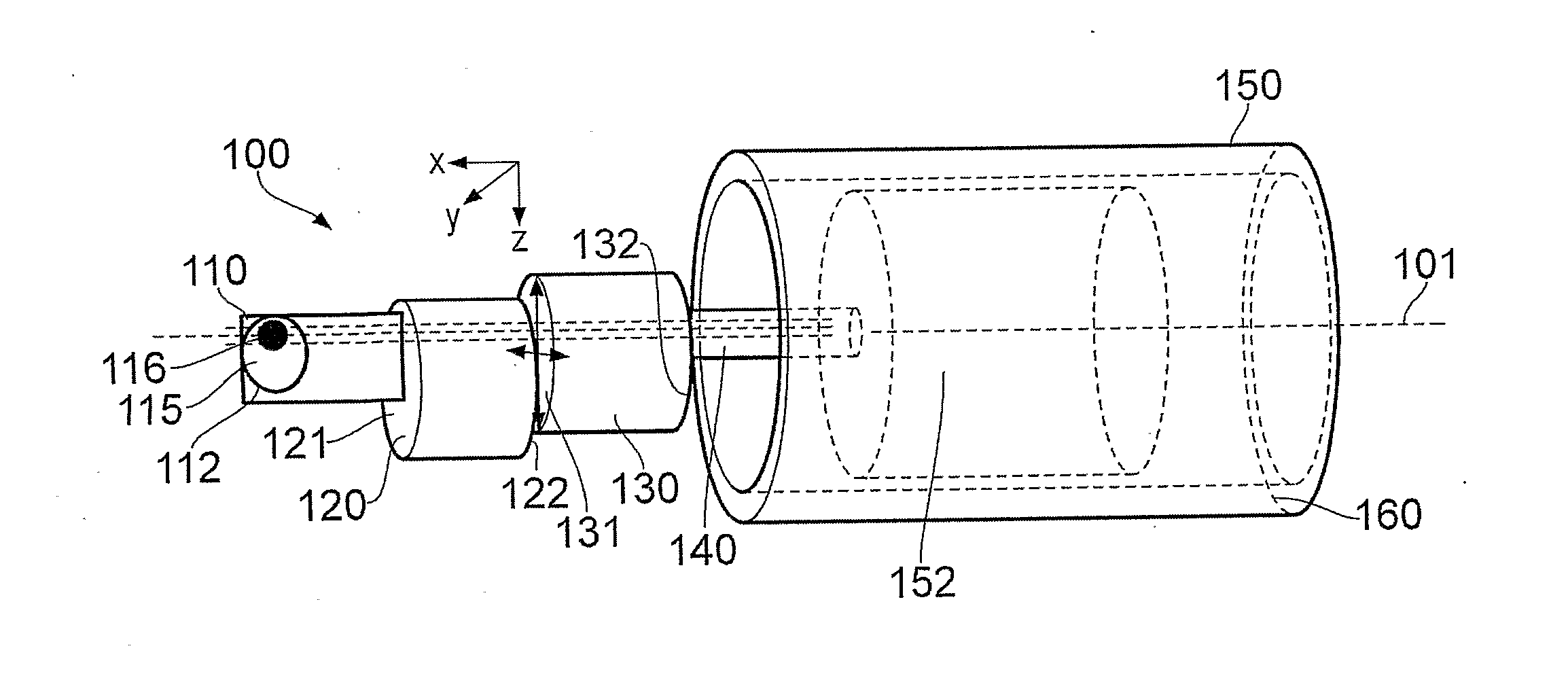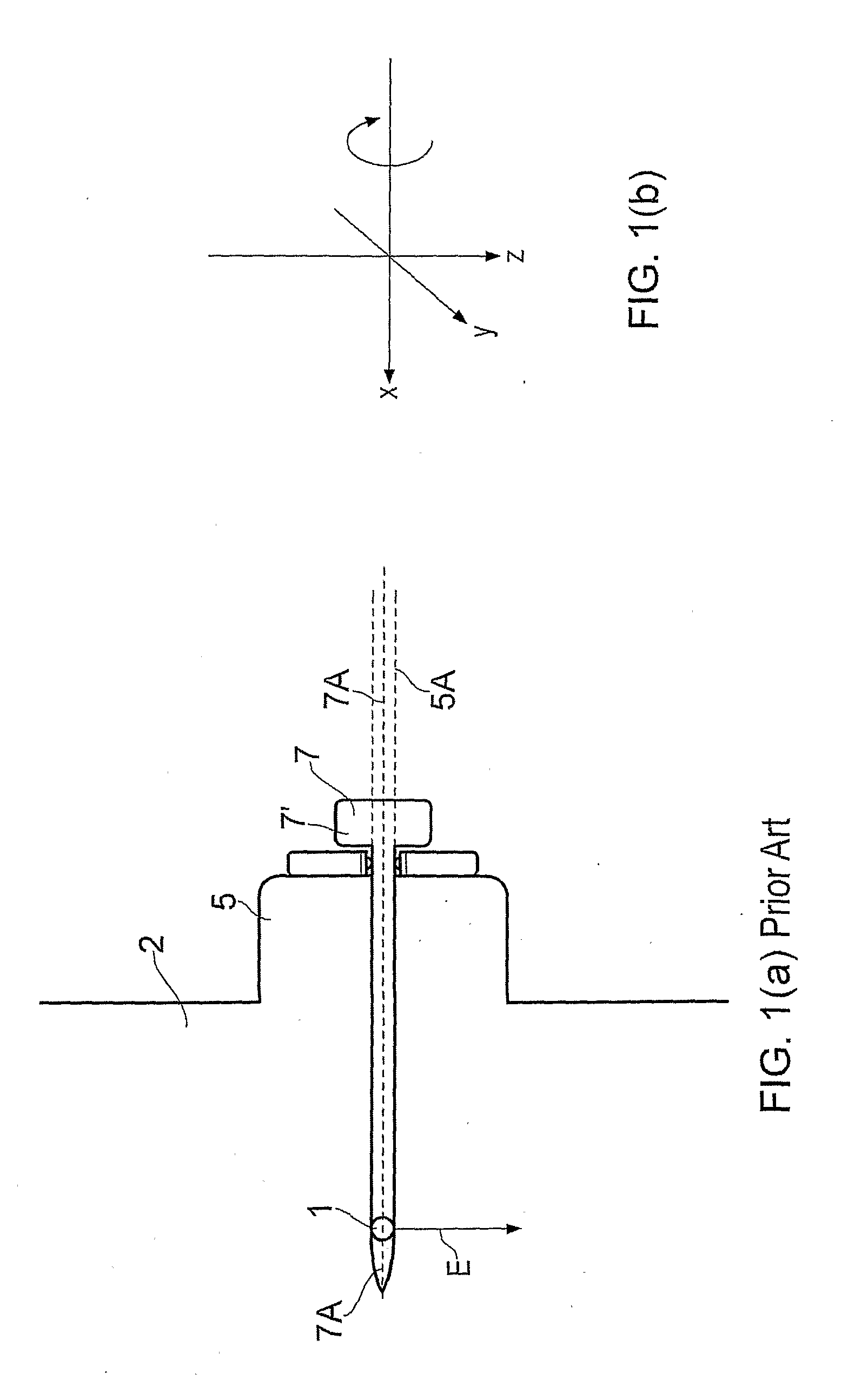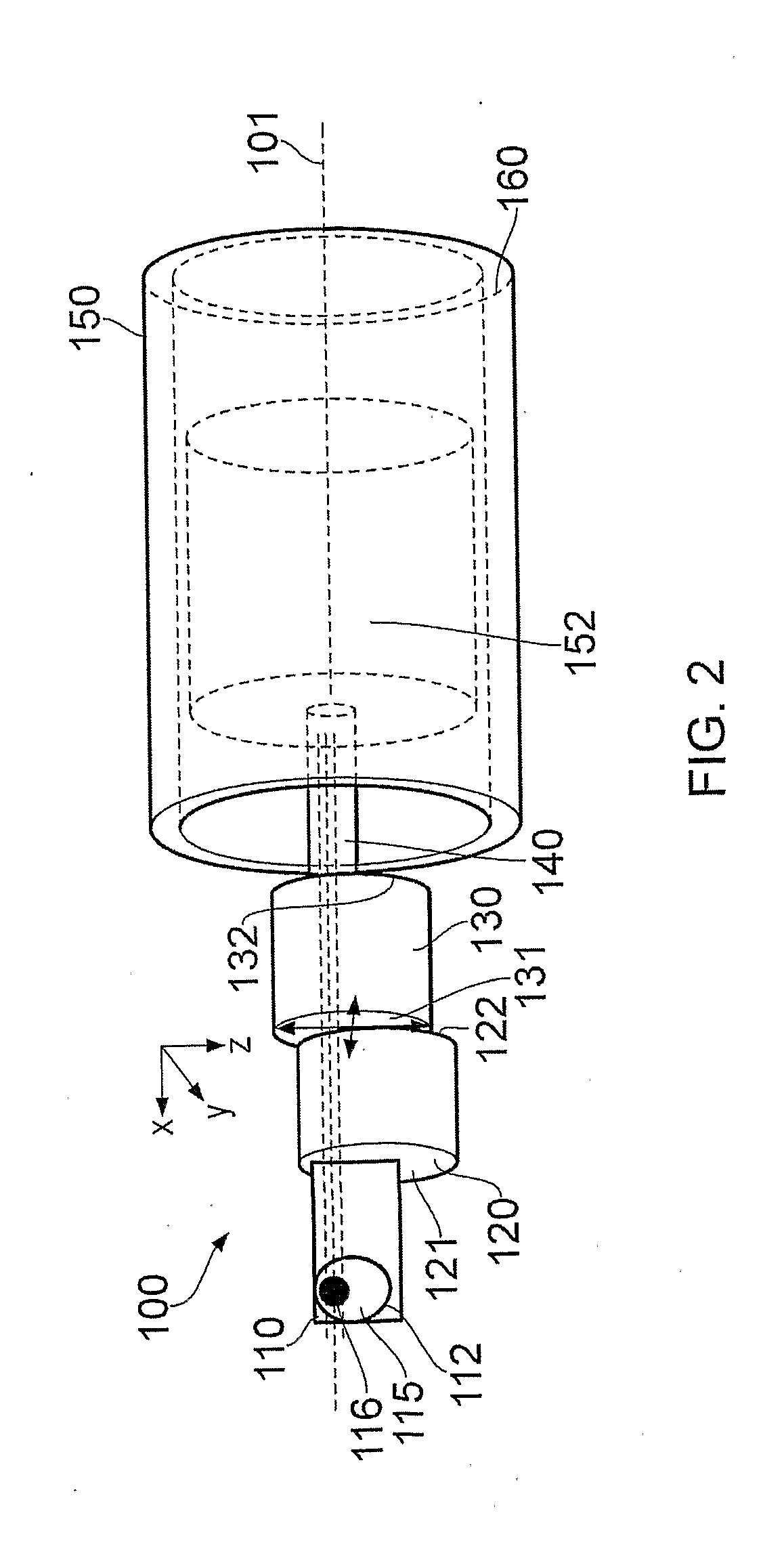Specimen holder assembly
a specimen and assembly technology, applied in the field of specimen holder assembly, can solve the problems of specimen movement, high magnification, and difficult translation, and achieve the effect of increasing the accuracy with which specimens are supported in a prescribed location
- Summary
- Abstract
- Description
- Claims
- Application Information
AI Technical Summary
Benefits of technology
Problems solved by technology
Method used
Image
Examples
Embodiment Construction
In one embodiment of the invention a holder assembly 100 is provided (FIG. 2) having a specimen mount portion 110 arranged to couple a specimen element 115 thereto. The mount portion 110 has an aperture formed therethrough over which a specimen element 115 is placed and fixedly attached thereto by means of an annular ring element 112.
In some embodiments the mount portion 110 is provided in a modular form and allows fixing of a specimen element 115 thereto in one or more different ways.
In some embodiments a specimen element 115 is provided in the form of a conventional support grid that may be coupled to a rod member which may in turn be coupled to the mount portion 110 of the holder assembly by insertion of the rod into a receiving aperture, for example by screwing into a tapped bore.
Other methods of securing the specimen element 115 to the mount portion 110 are also useful, including spring clips, screw plates and other fixing elements.
In the embodiment of FIG. 2 the mount portion ...
PUM
| Property | Measurement | Unit |
|---|---|---|
| angle | aaaaa | aaaaa |
| angle | aaaaa | aaaaa |
| tilt angles | aaaaa | aaaaa |
Abstract
Description
Claims
Application Information
 Login to View More
Login to View More - R&D
- Intellectual Property
- Life Sciences
- Materials
- Tech Scout
- Unparalleled Data Quality
- Higher Quality Content
- 60% Fewer Hallucinations
Browse by: Latest US Patents, China's latest patents, Technical Efficacy Thesaurus, Application Domain, Technology Topic, Popular Technical Reports.
© 2025 PatSnap. All rights reserved.Legal|Privacy policy|Modern Slavery Act Transparency Statement|Sitemap|About US| Contact US: help@patsnap.com



